(This post was published on our previous blog on 8/2/2015.)
By Laura Kintz, Archivist for Photographic and Textual Digitization and Former Graduate Student Intern (UMass Boston)
As a digitization intern at the Kennedy Library, I am lucky enough to work with the White House Photographs collection, scanning and cataloging photos. Through this work, I have learned so much about President John F. Kennedy’s daily activities, the ins and outs of the White House and its grounds, and many other aspects of the presidency. Twice this year, though, I have put my digitization work aside to help with the Library’s Preservation Week program. The current program involves the sorting of condolence mail that was received by the White House, mainly by First Lady Jacqueline Kennedy, in the aftermath of President Kennedy’s assassination. Staff members and interns have worked on arranging the materials alphabetically, so that individual items may be retrieved using the name of the sending individual, group, or organization.

During the most recent Preservation Week, from July 13-19, two collections collided when I discovered a condolence letter with a direct connection to the White House Photographs collection. During the alphabetization process, I just happened to pick up a letter with an attached photographic print of President Kennedy standing with two teenage girls in the Oval Office. In the letter, its writer, a girl from Pittsburgh named Anita Bernstein, expresses her heartfelt condolences to Mrs. Kennedy and describes the “wonderful experience” of visiting the White House with one of her friends and having the opportunity to meet the President. The photo she enclosed with her letter was from that visit.
The letter and photograph immediately piqued my interest. Before I even read the letter, I suspected that the photograph was from WHP. Having scanned so many photographs of the President in the Oval Office, I recognized the room right away and knew that since the photo was taken inside the White House, there was a good chance it was taken by an official White House photographer (it could have been taken by a news photographer, but I thought that unlikely, since the subjects of the photo were everyday citizens). I hoped it would be possible to confirm this by finding the original photograph in our collection. Luckily, aside from being an incredibly eloquent and moving tribute to the late President, Miss Bernstein’s letter was a goldmine of information that provided context for the photograph.
In her letter, Miss Bernstein recounts an event in Pittsburgh on December 4, 1962, after which she and a friend approached President Kennedy’s Press Secretary, Pierre Salinger, and expressed their “earnest desire to meet” the President. She writes that Mr. Salinger agreed to set up a meeting “if we could be in Washington the next day. Naturally we could.” That meant that Miss Bernstein and her friend were at the White House on December 5, 1962. White House Photographs are arranged chronologically, and sure enough, the finding aid lists a folder for that day titled “Visit of two girls from Pittsburgh, Pennsylvania.” There were two negatives on file for the event, neither of which had been scanned; I pulled both of them, and one matched the copy of the photograph that Miss Bernstein sent with her letter.
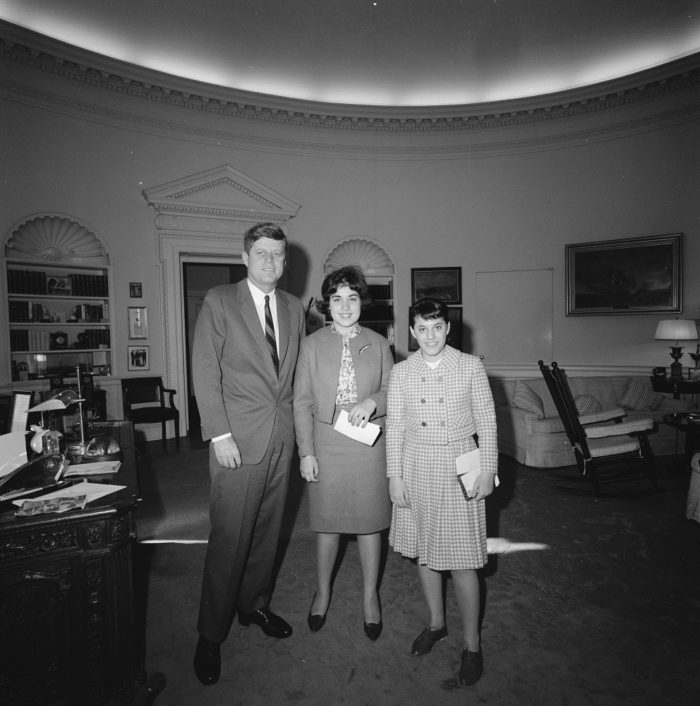
It was exciting to have confirmed that this photograph that I stumbled upon was actually part of the White House Photographs, because in addition to scanning photographs, I also catalog them, and I knew that this letter would help me with that process. Cataloging requires me to identify, to the best of my ability, the people pictured in a photograph, and to establish as much background as I can for the event or meeting depicted; this information ultimately accompanies the digitized photo in the Library’s digital archives. Since this photo in particular had not yet been scanned or cataloged, I had the opportunity to follow my regular workflow to complete those steps; this was when I realized the true impact of having the accompanying letter to provide context.
When cataloging a photograph, the first priority is to identify the people in it. The first places I check for names are the folder title, the backs of the prints on file, the President’s Appointment Book, the photographer’s log, and the shot cards. In this case, none of these sources provided any identifying information other than “Two girls from Pittsburgh” (the President’s Appointment Book didn’t provide any information at all, probably because this was just an informal meet-and-greet). This letter, therefore, put me ahead of the game because it provided something that these other sources did not: a name for one of the girls.
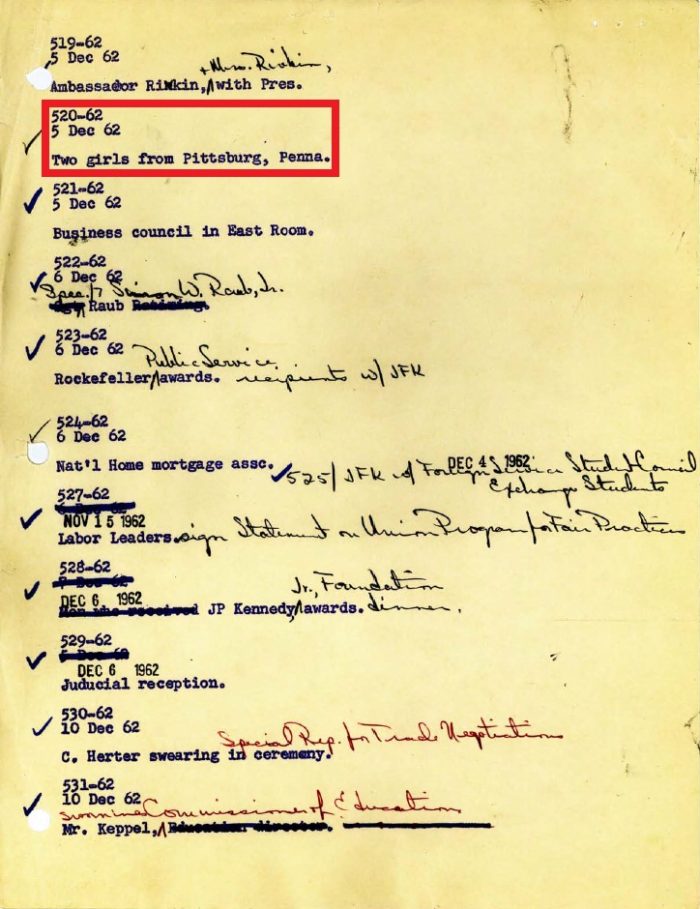
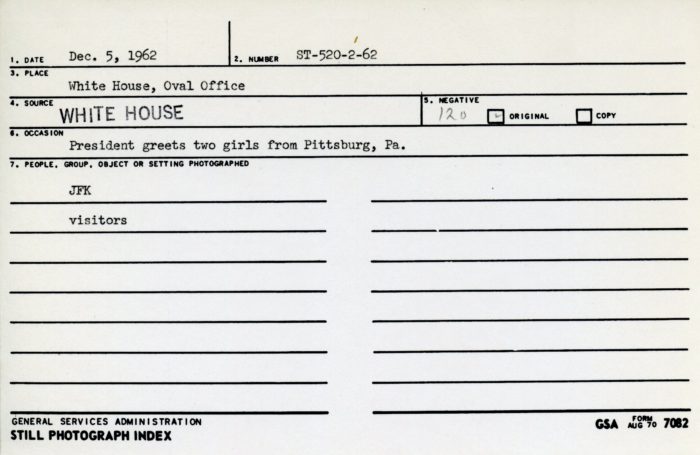
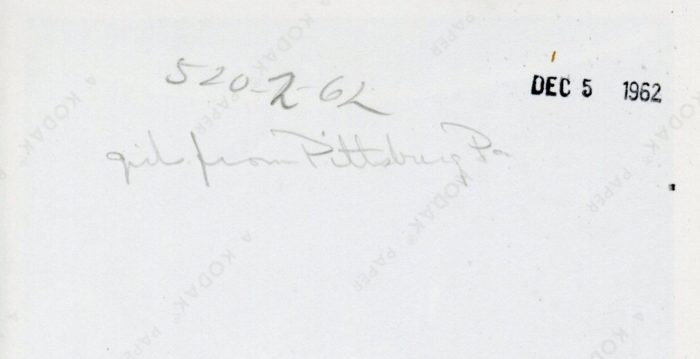
The next step in my research process was to try to identify the other girl in the photo, whom Miss Bernstein only identifies as “my friend” in her letter. Using just the basic search term of “Anita Bernstein” in Google’s online newspaper archive, I found an Associated Press photo published by The Tuscaloosa News on December 9, 1962, with the caption: “Two honor students from Pittsburgh’s Peabody High School hold up charm bracelets given to them by President Kennedy. The girls, Anita Bernstein, (left), and Judy Mankin, both 16, visited the President at the White House. The girls played hookey [sic] from school and made the trip to Washington. They met the President when he was in Pittsburgh on a political tour two months ago and Kennedy remembered them.” Although the scan of the newspaper was grainy, the photo was clear enough that I could tell that these were the same two girls who are in the WHP photo, and it was clear which one was which. I now had names for both girls.
To complete the cataloging process, I wrote a brief description of the photograph. If I had scanned the negative and cataloged the photo without the letter, Miss Bernstein and Miss Mankin may have remained just “two girls from Pittsburgh.” But from what I learned about them from the letter and the newspaper caption, I was able to identify them by name, and I felt confident in describing them as “young supporters” of President Kennedy, rather than just as “visitors.” Once the condolence mail is digitized, researchers will be able to link directly between this photograph and Miss Bernstein’s letter. As a pair, these two documents have a higher research value than each would have on its own.
This connection between the White House Photographs and Condolence Mail collections is an exciting one. Such a link would be noteworthy under any circumstances, but is even more so because Anita Bernstein’s letter is such a wonderful tribute to President Kennedy and his legacy. Together, the photograph and the letter illuminate the story of two civic-minded young women who were vocal in their support of their president. This story is certainly one that is worth telling, and one that may have been lost had it not been for some serendipity in the archives.
The full text of Anita Bernstein’s letter is available below.

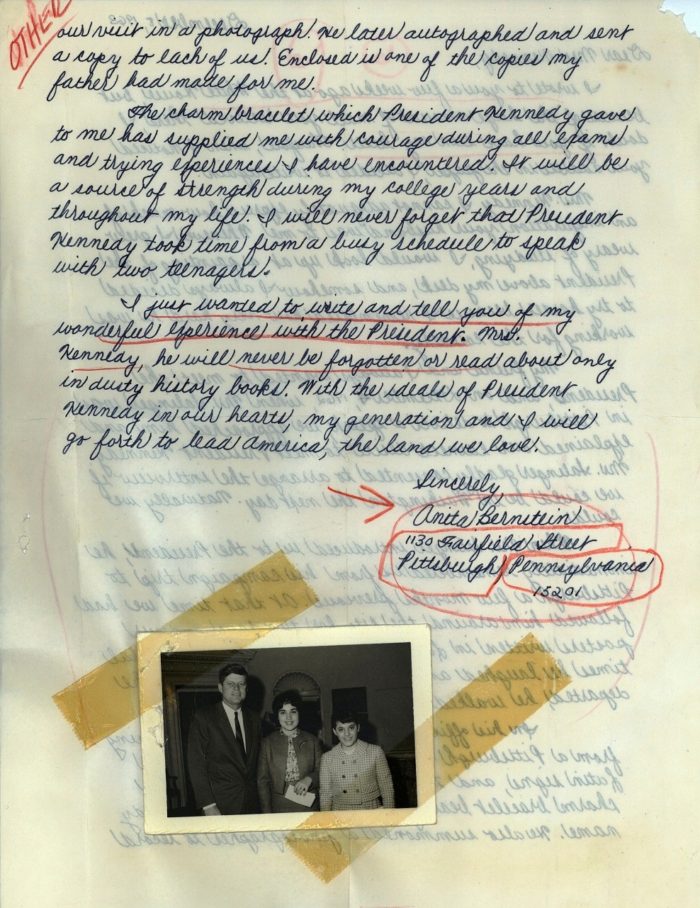
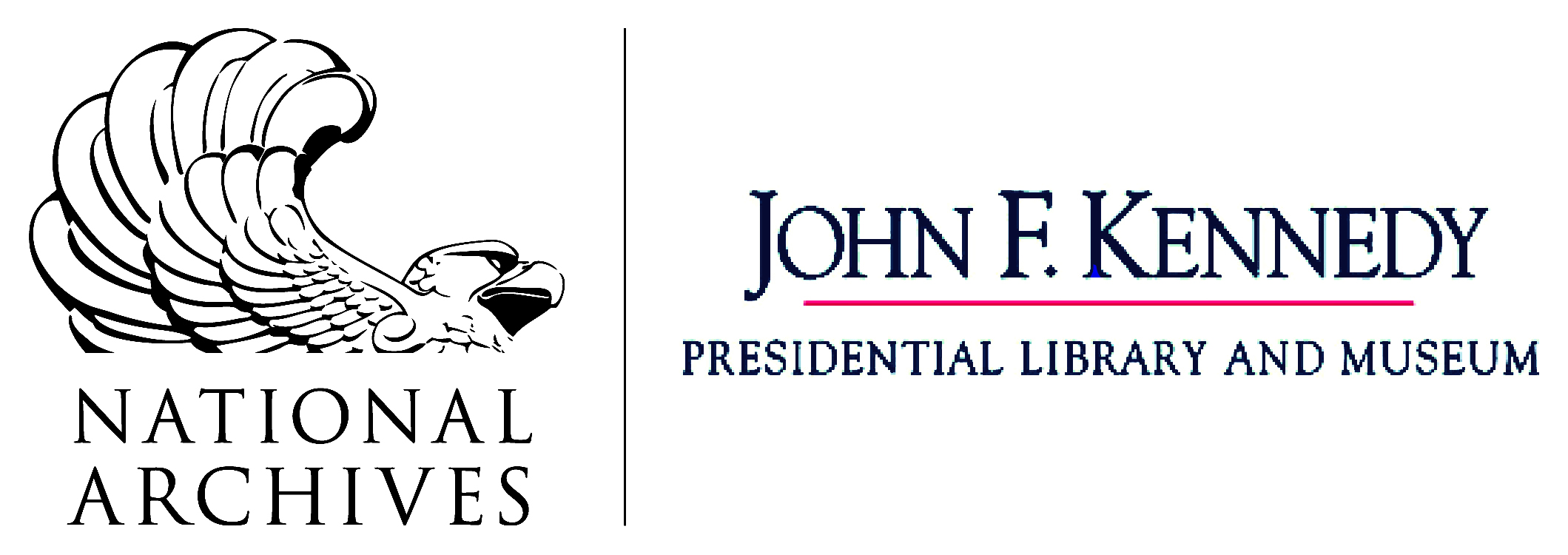
Good work done by Laura Kintz and a nice blog.
Kinda fun to see my handwritten notes and my GSA Form shown on line!
Allan Goodrich
How about that!
Appreciate the laudatory comments, which I’ll pass along to the author!
–Karen
Bonjour,j’espère que ce travail remarquable de Laura Kintz puisse un jour nous retrouvés dans ce qui a était le voyage de Jacquie et >Bob kennedy au Congo(RDC) ex Zaire.C’était en 1965 ou 1966,car Mobutu était déjà au pouvoir.Toute la délégation nous a rendu visite à l’Ecole John Kennedy de Kimbanseke à Kinshasa.Nous n,avons plus rien comme souvenir de cette visite.Courage et bonne fortune à l’équipe de Laura Kintz et à toutes et tous de la Fondation JFK.